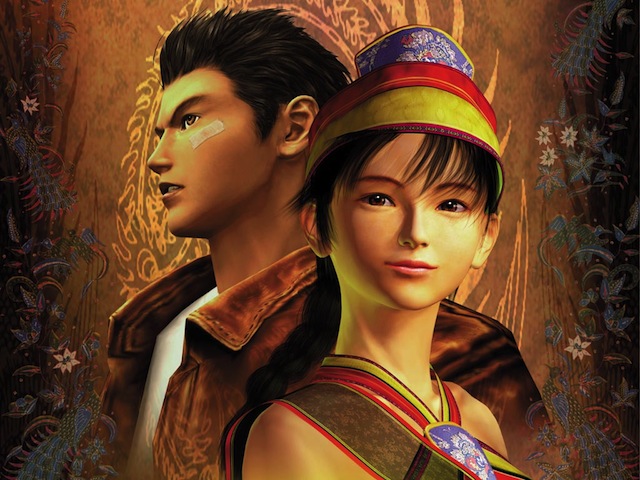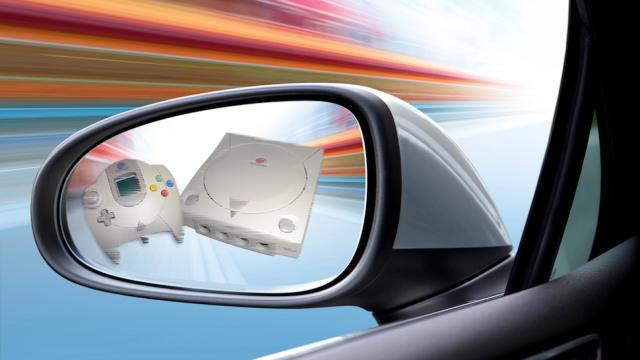As E3 made abundantly clear, we are on the cusp of the transition to a new console generation. What consoles can do, how they are made, and what they are used for are topics of constant discussion. But the machinations of how a console is put together are unclear to the public.
People often conflate the head of a division with a console: “Don Mattrick oversaw the development of the Xbox One, so it must be an extension of his vision.” Or they abstract things to the corporate level: “Have you heard about Sony’s plans for the PS4?”
Having been a game developer myself, I find these kinds of statements laughably reductive. I have often found myself wanting to find a book where I can say: “You, with the opinions about consoles! Read this and educate yourself.”
I’m happy to report that Zoya Street’s Dreamcast Worlds (available now as an ebook and coming soon as a physical edition) is that book. It approaches the development of the Sega Dreamcast with the kind of nuanced and wide-ranging research that is regrettably missing from online discussion about the coming console generation.

Dreamcast Worlds is divided into four parts: A section on the Dreamcast itself, followed by analyses of three iconic Dreamcast games: Skies of Arcadia, an epic JRPG; Phantasy Star Online, one of the first console MMOs; and Shenmue, an urban RPG set in an open world whose design was years ahead of its time.
The Dreamcast chapter is my favourite. Drawing from late 90s news articles and books, as well as interviews with developers (some of which were conducted specifically for this book), Street gives the development of a video game console the nuanced analysis that it deserves.
Street asks the question: where do new consoles come from? More precisely, what are the forces that compel a company to make a game console? As it turns out, it’s far more complicated than, “It’s time for a new console generation so let’s crank one out, everybody!”
Street lays out the argument that consoles are not just a piece of hardware in a box; they’re a network consisting of human developers, hardware components, development tools, games, corporations, competitors, consumers, the media, and more. It’s important to note that this list contains entities both inside and outside of Sega.
Street shows us that there is no single point of origin for a console, and that we can’t even assume a console “comes from” inside the company that creates it. While this would be an unsatisfying conclusion on its own, he then delves into some of the complexities around the creation of a console. Here’s a sampling of things he discusses:
- the economic conditions that factored into hardware component choices
- the training required for developers to move from 2D offline games to 3D online games
- the odd ramifications of having to ship games on GD-ROM instead of on DVD-ROM
- the structure of Japanese game studios in the late 1990s
- the communication channels between Sega and third party developers
- the way the internet was beginning to change fan engagement with developers
- the technical tools provided by Sega to help developers make Dreamcast games
At the end of this journey, the reader comes away with a grasp of how immense a task releasing a game console is, and how a lot of it isn’t necessarily under anyone’s control.
Despite my love for the console-centric first section, the chapters on individual games are also very much worth reading. Each of the games is analysed through the lens of space, which is fitting as the Dreamcast came out at a time that developers were finally getting a handle on what to do with 3D, networked space.
The section on Skies of Arcadia considers the history of the JRPG and where the JRPG was situated in relation to the rest of Japanese culture in the 1990s. Street then draws a beautifully constructed line from the game’s spatiality, architecture, and movement to the brave new world of 3D networked consoles that was being ushered in by the Dreamcast.
Street’s look at Phantasy Star Online is the weakest part of the book. That’s not to say it’s bad: its central thesis is that Phantasy Star Online’s space consists primarily of people rather than 3D architecture. The chapter relies heavily on interviews with people who played the game around the time of its release. The interviews are interesting but I’d like to have seen more discussion of the technical troubles that the developers at Sonic Team surely encountered when building one of the first major console MMOs.

Shenmue is a fitting game for the book to end on. Much as the Dreamcast is nostalgically viewed as a potentially revolutionary console cut tragically short, Shenmue is looked back upon as an ambitious game that could have changed the industry in the way Grand Theft Auto III did two years later.
Dreamcast Worlds looks at the shared legacy of a console and its games, and gives its complicated subject-matter the treatment it deserves. It looks at the Dreamcast and its era with fresh eyes, mindful of history but never reducing the Dreamcast to a bullet point or a casualty in the ongoing “console wars” narrative. I can only hope that readers of Dreamcast Worlds will apply a little bit of its generous, considered approach the next time they find themselves discussing the relative merits of our new crop of consoles.
Darius Kazemi is a web programmer at Bocoup who spent a decade working on MMORPGs, Facebook games, and weirdo indie stuff. These days he makes a lot of Twitter bots and is writing a book about Jagged Alliance 2.
Rear-view mirror photo by Yu Lan, Shutterstock.

Comments
16 responses to “Book Review: To Understand Next-Gen Consoles, Look To The Dreamcast”
This book.
Do want…
The dreamcast was handsdown my favourite console, RIP buddy! God dam i miss shenmue
^^What he said but adding Soul Calibur and Powerstone to the games I miss list.
Totally agree! I was actually just looking at Dreamcasts on Ebay last night and saw one that came with Shenmue.. I was sooo tempted.
Do eeeet!
I still have mine, its still hooked up to my main tv and gets booted up every couple of months. Still a good system.
gonna pick this up on ebook. Didn’t know it existed!
Replayed dynamite cop last night. Love my dreamcast.
God damn I will always love my Dreamcast.
Still have it set up. Need to figure otu a safe way to replace the LCD battery.
The internets a funny place. I was 17 when the Dreamcast was released, heavily into gaming, as were most of my associates. Not a single one of us ever came remotely close to purchasing a Dreamcast. Hell i never even saw one in another persons house.
Where did all thse Dreamcast fans come from? The internet loves to proclaim it as the greatest console ever, but even if those people truly believe it they certainly wernt making much noise when the console was still being supported. Im sure there are many genuine fans, but i just cant help to think that a lot of the noise comes from band wagoners looking to score some old timey gamer cred.
***I should add that im not accusing anyone here of band wagoning, this is one of the few places where i actually expect to find fans of the console.
The internet is a big place! Another ‘internet trend’ could be the Gamecube controller, everyone seems to remember that fondly (myself included) though I only remember one other friend having a GCN at the time. More people read Kotaku than you or I went to school with 😛
That said, I never saw a Dreamcast outside of a shop either.
I definitely understand where you are coming from.
I was 18 when it launched in Australia and had this affinity with having all consoles, so bought it pretty much at launch just to have one. I was the only person to this day that I’ve ever known personally to own one! I absolutely fell in love with it and spent many hours back in the day playing Metropolis Street Racer, Sega GT, Shenmue just to name a few. I could even play NBA multiplayer online. It really was an advanced console that I think just came along a little before its time. Trading it in was a huge regret of mine.
I’m sure the true fans were always out there, but the internet wasn’t quite like it is today with all the social media that surrounds us. Back then I couldn’t tweet about how awesome my Dreamcast is, and for it to reach so many people.
I bought one on launch.. Still collecting for it. What amazes me is that most people dont know that new games still come out for it till this day… Gunlord for example.
Still have my Dreamcast from launch. So many hours spent in the worlds created for that system. PSO, Sonic, Shenmue, Toy Commander, the list goes on.
I definitely want to pick up a physical copy of this book for sure.
Still the best boot-up sound in gaming
I got into collecting Sega four weeks ago, I now own a Saturn, Megadrive/MegaCD/32x, a Master System, and yes a Dreamcast. Sega hardware is easy to obtain. Anyone interested in the Sega lineup should definately get into collecting it. The Dreamcast supports both VGA and RGB output, and 10/100mbit ethernet. It really was ahead of it’s time.
New games come out for this at least 1 or 2 a year since its public demise.! Gunlord for example.